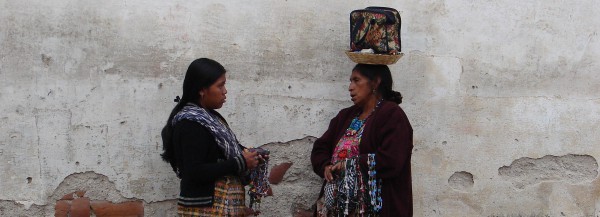- About this Program
- Apply to BUILD
- BUILD en Español
- BUILD Guatemala
- BUILD Guatemala Program Members
- About Santa Anita la Unión
- Caffeine and Capitalism: a Brief History of Guatemalan Coffee
- Reflections from the Field
- Projects in Agriculture and Productivity
- Projects in Ecotourism
- Projects in Technology and Communications
- BUILD India
- Student Research
- Events
- External Links
- Donate
- Contact Us
- News
- Press Clips
- Calendar
- Resources
Building Understanding through International Learning and Development (BUILD)
BUILD Guatemala

|
|
Guatemala is a country of contrasts, with a violent history and an uncertain future (photo by Mike Niconchuk, Tufts '11)
BUILD in Guatemala
BUILD’s Guatemalan partner community, Santa Anita la Unión, is an organic coffee cooperative located in the fertile Quetzaltenango province. Most of the men of the cooperative, and a number of the women, fought against the government with the Guatemalan National Revolutionary Unit (URNG) from the 1970s to 1990s, and in 1996 this group of combatants handed in their weapons in exchange for the then-abandoned farm. When the group began to re-establish themselves at Santa Anita, they confronted many startling realities – there were no houses, the coffee plants were old and unproductive, water was scarce, and their skills were insufficient. With the help of Fondo de Tierras and a number of NGOs, houses and water pumps were built and coffee production began. Ten years later, the farm still functions, but is plagues by widespread poverty, low production, a lack of education, limited access to water, communications barriers, and a financial mess that is the result of government neglect.
Forming the Community Development Plan and the Socioeconomic Survey
The Community Development Plan (CDP) is the result of the research BUILD conducted in the summer of 2008. The team of ten spent two weeks at Santa Anita, and upon return all students' research and field data was compiled and a prioritized list of community needs was developed. After speaking with the junta directiva of Santa Anita, BUILD formulated, with their support, a four-part plan for overall community development to be realized starting in 2009. With the help of the 160 members of Santa Anita, local and international NGOs, and individuals at Tufts and beyond, BUILD hopes to complete all areas of the CDP to propel the cooperative's economic, social, and political growth.
The CDP required much investment in Santa Anita – financially, physically, and intellectually. Because of the scale of its commitment, BUILD recognized the need to gather detailed, qualitative and quantitative information as to the socioeconomic composition of the community. Such statistical information would improve BUILD’s understanding of community demographics, provide concrete statistics for potential contributors and collaborators to review, and establish a baseline against which BUILD students can monitor and judge the success of the various projects. BUILD designed a comprehensive survey that covered topics including health, nutrition, income, political affiliation, and education and worked with each of the 31 families present in the community to gather the information.

